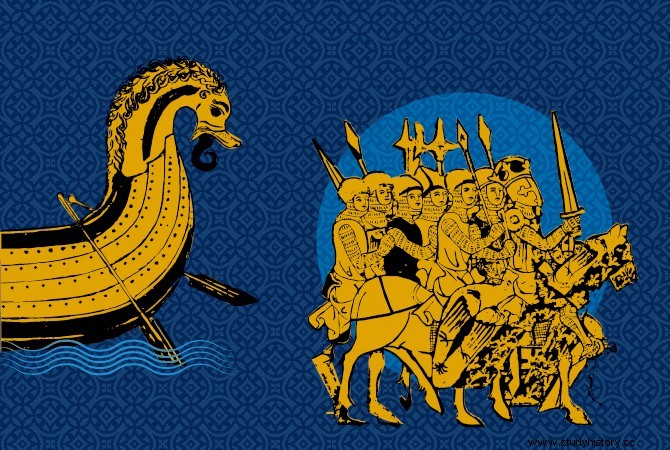
Catherine was born in 1347 in Siena, Tuscany, where her father was a dyer. Last child of a large family, she says she had a vision around the age of 6:to Christ who appeared to her, she gave herself as a wife.
The literature of the Middle Ages written by men, most often monks, proposes three states of life for women:virginity, marriage and widowhood. The nuns figure at the top of this hierarchy, their sacrifice making them close to angels, even martyrs.
However, these virgins must renounce the world without exaggeration, cultivating the virtues of obedience, kindness, chastity. All excess becomes vice:pride annihilates humility, disgust with life abolishes the benefit of the practice of charity.
Asceticism and mortifications
When Catherine of Siena decides in 1354 to consecrate her life to God, we will first reproach her for her outbursts:her parents Iacopo and Lapa would see her much better married and mother of a family. As proof of her will, she cut her hair at the age of 12, thus losing her ability to seduce a fiancé. It was only at age 17 that a group of retired widows, the mantellate , agrees to admit him into its midst.
Asceticism and mortifications are his discipline. She cries thinking of Christ's sacrifice before taking food. She eats only dry bread and raw herbs. Illiterate, she dictates advice to better love God.
At the same time, she advocates charity towards the poor and the sick, in accordance with the tradition of the Dominican sisters she joined. She is guided in her mystical approach by two Dominican brothers:Thomas della Fonte and Thomas Caffarini. Little by little, his reputation swells in the city of Siena.
The context is favorable to his action:the black plague that has hit Europe since 1348 and will kill at least a third of the continent's population has reinforced the fear of divine punishment. Dances of death are multiplying on the walls of churches, the faithful fearing divine surveillance and punishment. The time is conducive to mysticism and forgiveness. A holy woman can then appear as an intermediary between God and sinners.
Diplomatic trips
The XIV th century is also in Italy a century of confrontations:the pope has settled on his lands in Avignon since 1305, and the borders of the Papal States are called into question by the cities of the north of the Italian peninsula, in particular Florence. From 1370 and during the ten years that she had left to live, Catherine offered herself as an intercessor in the affairs of the century as she is in spiritual affairs. She renounces a strictly contemplative life and undertakes several journeys.
From 1370, Catherine offered herself as an intercessor in the affairs of the century as she was in spiritual affairs.
But before acting, she must go before a religious tribunal, the general chapter of the preaching brothers, which exonerates her from the suspicions that weigh on her:how can a woman traveler be irreproachable in her conduct? First referred to as “mulier girovaga” , Catherine emerges cleared of this ordeal. After receiving the stigmata of Christ in 1375, she set off for the Comtat Venaissin to meet the Pope.
Against all odds, Gregory XI will listen to her advice, understanding that she has only one goal:to strengthen the siege of Saint Peter against the advance of the Turks in the east. While he has already made his decision to return to Rome, Gregory XI is comforted by the speech that the young woman gives him. She even manages to open negotiations between the city of Florence and the sovereign pontiff. Diplomacy supplanting war, the situation is improving.
At the beginning of the year 1377, Gregory XI returned to Rome. However, the great schism will occur a year later with the election of an antipope in Avignon. Catherine continues her diplomatic work with more or less success.
A new model of feminine spirituality
From Catherine of Siena, who became a Doctor of the Church in 1970, we have received The Dialogue of Divine Providence (or Book of Divine Doctrine ). Her letters, of which no original remains, were copied by her disciples and collected in collections which circulated after her death, contributing to the dissemination of her thought and proposing a new model of feminine spirituality.
Raymond of Capua, her confessor and biographer, assures us that she was 33 years old when she died in 1380. But historians wonder about this coincidence with the age of Christ. As soon as he disappeared, many pilgrims came to his tomb in the church of Santa Maria sopra Minerva, in Rome. We are trying to canonize her. This will be done by Pope Pius II in 1461.
Find out more
Catherine of Siena. The Fire of Holiness, by C. Rancé (choice of texts with commentary), Points, 2008.
